Fatal Fury arrived in November of 1991, six months after the debut of Street Fighter II, a game that changed the fighting game genre in terms of approach and overall popularity. Unlike many of the other games that tried to capitalize on Capcom's runaway hit, Fatal Fury became a success and spawned a number of sequels and spin-offs. The most prominent of these is The King of Fighters series, which is still going strong with 15 official entries and counting. The last time the Fatal Fury series has seen an entry of its own was in 1999 with Garou: Mark of the Wolves, but the long hiatus ends with Fatal Fury: City of the Wolves.
If you're familiar with the mechanics of The King of Fighters, you'll instantly feel at home with City of the Wolves. It uses a four-button fighting system like almost every SNK fighting game. You have a super meter segmented into two pieces that can be used to initiate special moves. One interesting mechanic is the S.P.G. system, a renamed version of the T.O.P. system from Garou: Mark of the Wolves. By default, hitting this section of your health bar gives slightly enhanced attacks. What makes the system ingenious is the fact that you can decide which third of the health bar to place this section in, so you can start off strong by placing it in the beginning, change the tide of the fight if you place the section in the middle, or use it as a last-ditch effort by placing it at the end. The system works for adding more strategy to the fight, and it helps this game feel distinct among its contemporaries.
The brand-new mechanic is the Rev System, which opens up some new abilities of its own. Rev Arts is similar to what you'd see in Mortal Kombat X in that it amplifies an existing special to deliver more damage. Rev Guard is an amplified block that pushes away the attacking opponent while also ensuring you get no chip damage from an opposing special move. Rev Accel is a way to keep chaining Rev Arts into one another for special combos, and Rev Blow is a special move similar to what was seen in the Street Fighter series, where you'll collide with an enemy attack and take no damage while delivering your own attack. This can only be done once you're at the S.P.G. part of your health meter, though. All of these are powerful tools, but they build up your Rev meter; when filled, it prevents you from doing any of these techniques until the meter empties out or drains naturally from landing basic attacks. Like the S.P.G. system, it makes the fighting more technical, since you're trying to balance when to use these things without overusing them. While you may not see it too much in a casual match, expect this to be used heavily in matches with more seasoned fighters.
Even before delving deep into the gameplay, there are a few nitpicks. Winning any round in a match, especially the final one, has you lingering on the end of the winning pose animation for longer than in other similar games. Also, finishing up Arcade mode sees the game do a full reset as you'll see the opening company logo sequences play before you get back to the title screen. Again, very minor things to complain about but they are noticeable nonetheless.
When it comes to the roster, City of the Wolves brings back every fighter from the previous game and also introduces some new fighters. Absolutely no one is left behind, which is a great sign since it means that anyone familiar with Garou: Mark of the Wolves can immediately jump in and find their favorites. Some characters from the Fatal Fury series, such as Mai Shiranui and Billy Kane, are back and play exactly like they did in The King of Fighters series. Of the two new characters, Kain has a completely new fighting style, while Preecha plays out like a slightly changed version of Joe Higashi. They both play very well and complement the original cast nicely.
The new additions to the roster that are creating some buzz are two real-life personalities. The first is Portuguese pro soccer player, Cristiano Ronaldo. For the most part, he's a decent fighter. The use of a soccer ball for his special moves isn't overdone, and aside from his Rev Blow move, where it looks like he's lunging forward and trying to reach for something coming toward him, his moves look fine. The problem is that he's only available in the versus modes and is absent in any solo mode. He feels tacked on, like he's a DLC fighter who was thrown into the base game at the last minute; it doesn't curb the negative reaction to him added over more established fighters from the series.
By contrast, Bosnian-Swedish DJ Salvatore Ganacci is present in every game mode. He's present in all of the solo modes, and the game even makes an effort to integrate him within the game's lore. There's a real effort in making sure he wasn't haphazardly added. It's just too bad that Ganacci doesn't feel good to play. His move set does a good job of translating his antics into fighting moves. His default standing animation has him vibing along with various hand gestures, his throw sees him walk alongside his opponent with his hand on their shoulder before shoving them, and one of his special attacks has him glaring at his opponent and emitting a small laser beam. Aside from being difficult to read, almost all of his attacks lack range, and that puts him at a very big disadvantage compared to the rest of the roster. It's difficult to the point where you will lose to your first opponent, even if you drop the difficulty level to the lowest point. Some people will take that as a challenge and purposefully work on getting good with the musician, but he really feels like the odd man out in this lineup, despite the work meshing him in with the cast.
When it comes to offline modes, there's a good deal to work with. There's the standard training mode along with training missions to perfect combos. Versus is self-explanatory, but there is a version where you can tweak a few parameters, such as turning on S.P.G. all the time or implementing double damage. It is curious why this is a completely different mode versus being able to toggle the options. Arcade mode has you fighting seven opponents to get your own ending for the chosen character. All in all, they are exactly the kind of things you'd expect from a modern fighting game.
Episodes of South Town is the mode that will catch the eye of dedicated solo fighting fans. The mode is billed as a pseudo-RPG, like the World Tour mode in the home versions of Street Fighter Alpha 3. However, it feels like an extended story mode for whomever you pick. It does play out like an RPG where you'll get into an equal amount of dialogue and fights, and you'll level up after each bout, but stat and health upgrades are automatically distributed. There's value for those who enjoy lore, since the stories aren't repeats of what's in the Arcade mode. The mode celebrates the games of the past by letting you look at old levels and get their significance in the in-game universe, along with current roster commentary on each location. Overall, it isn't as flashy as Street Fighter 6's similar mode, but it does a very good job in keeping solo players entertained for a long while. Players will revisit this mode many times to unlock new costumes and colorways for each fighter.
When it comes to online play, City of the Wolves matches up with The King of Fighters XV in terms of performance. The online play feels good thanks to rollback netcode, and the option for cross-play ensures that the game starts with a wide base of opponents; this is essential, since console fighting players still significantly outnumber fighting game fans on the PC. Standard ranked and player matches are present, along with the ability to set up rooms. There's also a clone feature. Similar to Tekken 8, you can upload your data after a few matches to create a clone to fight online for you. There's also the ability to download clone fighters made by other players, giving you the chance to get some online fights even if your connection is bad or if you can't find anyone to battle against. The only issue is that the process for doing this is a tad cumbersome, as you need to download a replay as your base and then ask the system to translate that data into something usable for training. It's essentially how you train modern AI, instead of this being a one-step process.
The audio is quite good overall. The voices come in both English and Japanese versions, and they're good, even if Cristiano and Salvatore aren't voiced by their real personalities. It would've been nice if you could mix English and Japanese voices on a per-character basis, but that's a very minor thing. The sound effects are nice, but the real highlight is the music. By default, the original SNK soundtrack catches the vibes of the old games. You'll get some guitar heavy tracks mixed in with lots of horn instruments for good measure. You can also opt for a full EDM soundtrack of released tracks featuring Salvatore Ganacci and his contemporaries, like Steve Aoki. The best feature is that you can customize the soundtrack for the entire game using a combination of the original SNK tracks, the licensed stuff, and just about every track featured in both the older Fatal Fury and Art of Fighting games. This ensures that the audio experience is near-perfect for older and newer SNK fans alike.
Graphically, the game mostly matches the kind of fidelity seen in The King of Fighters XV. The characters are large in stature, and their animations are smooth. The game uses a color scheme for both its characters and backgrounds that seems like a mix of anime and American comics. There are bold colors and shading lines and dots emphasizing shadows and making other elements pop during character close-ups. The only issue is with the backgrounds, namely the frame rate. The main fighting area runs at a minimum of 60fps, while some of the background elements hover around 30fps and sometimes less. This was fine in the previous games, where the frame rate difference was only noticeable if you look for it, but it's being called out due to one stage where you're fighting on a train, reminiscent of Fatal Fury 2. Because the constantly moving background is a big part of the visual, the frame rate discrepancy makes for an odd-looking stage; the scrolling doesn't feel right. It doesn't completely throw off your concentration, but it is distracting. Having the framerates closely match one another might go a long way in making the stage look normal.
Steam Deck owners will be initially disappointed. For some reason, the game defaults to 848x480, resulting in a very squished picture. You can go into the settings to change this to 1280x720, but it leaves a bad first impression. Once that's fixed, the game runs fine. Even with a few moments during versus character transitions where the graphics look extremely pixelated, the overall look on the LCD version of the device is very nice, and that's with most of the graphical settings at their highest. The frame rate stays locked at 60fps with rarely any significant dips during a fight. Battery life is where the game doesn't do so well; you're looking at an average of two-and-a-half hours on a full charge. It's better than most of the newer fighting games on the system, but it's still a tad disappointing.
Despite a few missteps, Fatal Fury: City of the Wolves remains a solid fighting game and a worthy entry in the series. The fighting system remains good, and the new additions solidify what worked back in Garou: Mark of the Wolves. The various offline modes add lots of material to the game, especially Episodes of South Town, and online play works quite well. The guest characters could've been implemented better, and there are a few presentation-related nitpicks, but overall, fans of SNK fighting games will be pleased with City of the Wolves.
Score: 8.5/10
More articles about Fatal Fury: City Of The Wolves



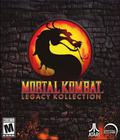

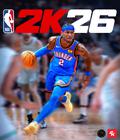
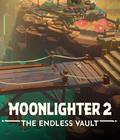
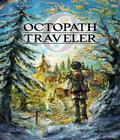
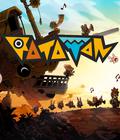
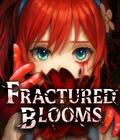

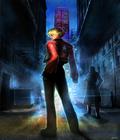 Fatal Fury: City of the Wolves features new and fan-favorite characters, a REV system that offers offensive options to ignite fights, and classic battle systems evolved for modern play, all wrapped in a riveting art style.
Fatal Fury: City of the Wolves features new and fan-favorite characters, a REV system that offers offensive options to ignite fights, and classic battle systems evolved for modern play, all wrapped in a riveting art style.


























